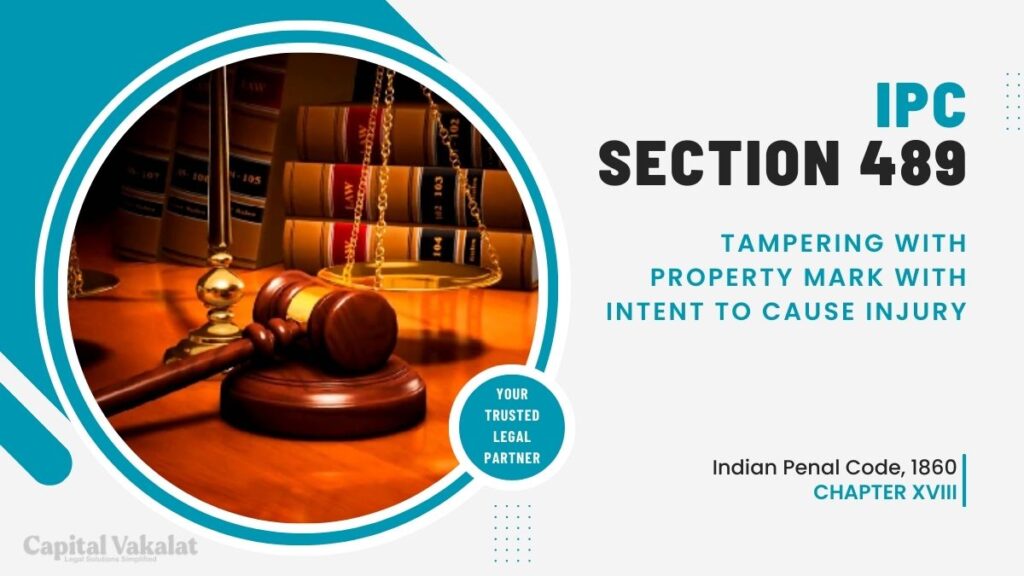Property marks are an essential aspect of safeguarding possessions, providing a unique identity to belongings and aiding in their recovery in case of theft or loss. Section 489 IPC addresses the serious offense of tampering with property marks with the intent to cause injury.

This article delves into the intricacies of this legal provision, exploring its historical context, implications, and preventive measures.
Understanding Section 489 IPC
Section 489 IPC, a critical part of the Indian Penal Code, criminalizes the act of tampering with property marks with the intent to cause harm. This offense goes beyond mere vandalism; it involves a malicious motive aimed at causing injury to the owner of the marked property.
Tampering with Property Marks
Property marks are distinctive symbols, names, or features that owners use to identify and claim ownership of their possessions. Tampering with these marks raises legal concerns, especially when done with the intent to inflict harm. The article will explore the legal implications of such actions and the significance of property marks in different scenarios.
Historical Context
To fully understand the gravity of tampering with property marks, it is crucial to delve into the historical evolution of Section 489 IPC. Landmark cases and legal precedents have shaped the interpretation and application of this provision, setting the stage for its contemporary significance.
Types of Property Marks
Property marks come in various forms, ranging from serial numbers on electronic devices to engraved symbols on valuable assets. Each type serves a unique purpose, and understanding the distinctions is vital for comprehending the offense under Section 489 IPC. The article will shed light on the diversity of property marks and their relevance.
Consequences of Violating Section 489 IPC
Legal penalties for tampering with property marks can be severe, reflecting the gravity of the offense. This section will explore the potential consequences for offenders, emphasizing the broader impact on both individuals and society at large.
Prevention and Security Measures
Given the prevalence of property mark tampering cases, implementing effective prevention and security measures is crucial. The article will provide practical tips on safeguarding property marks and minimizing the risk of falling victim to such offenses.
Case Studies
Real-life examples offer valuable insights into the consequences of property mark tampering. The article will present case studies that highlight the complexities of these incidents, drawing lessons from both successful prosecutions and unfortunate instances where justice was elusive.
Public Awareness
Raising public awareness about Section 489 IPC is essential for fostering a sense of responsibility and vigilance within communities. This section will discuss ongoing campaigns and initiatives aimed at educating the public about the significance of property marks and the legal ramifications of tampering.
Conclusion
In conclusion, this article has navigated through the intricacies of Section 489 IPC, shedding light on the legal aspects and practical implications of tampering with property marks. It serves as a call to action, urging readers to be vigilant, protect their property marks, and contribute to creating a society where such offenses are minimized.
Frequently Asked Questions
What are the legal penalties for tampering with property marks?
Offenders can face severe legal consequences, including fines and imprisonment, as specified under Section 489 IPC.
How can individuals safeguard their property marks?
Implementing security measures such as engraving, tracking devices, and maintaining a record of property marks can help protect belongings.
Are there any notable cases related to property mark tampering?
The article highlights real-life case studies that provide insights into the legal complexities surrounding property mark offenses.
Why is public awareness crucial in addressing property mark tampering?
Public awareness plays a vital role in preventing such offenses by fostering a sense of responsibility and vigilance within communities.